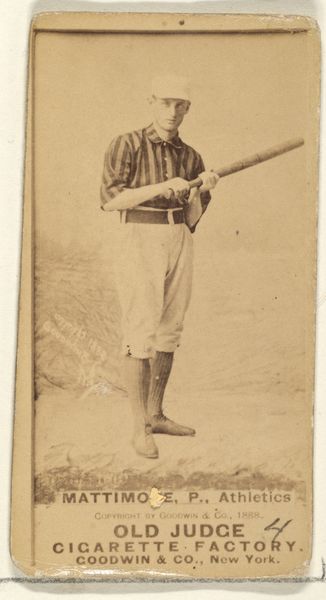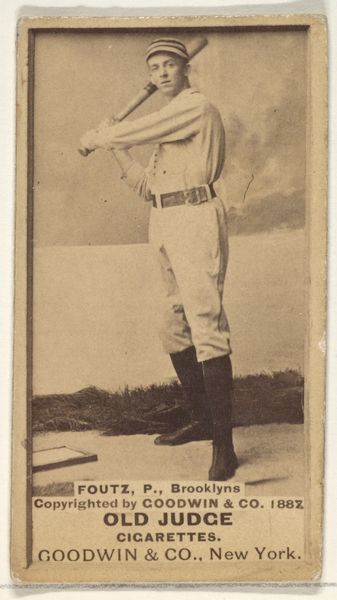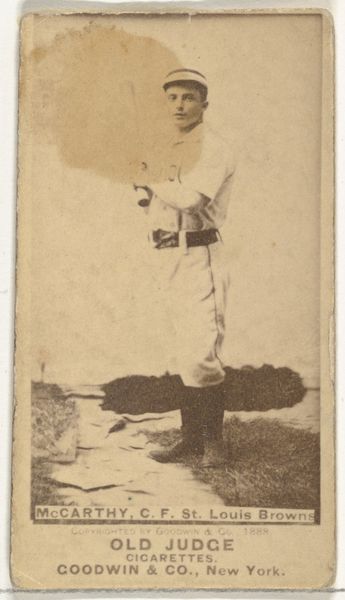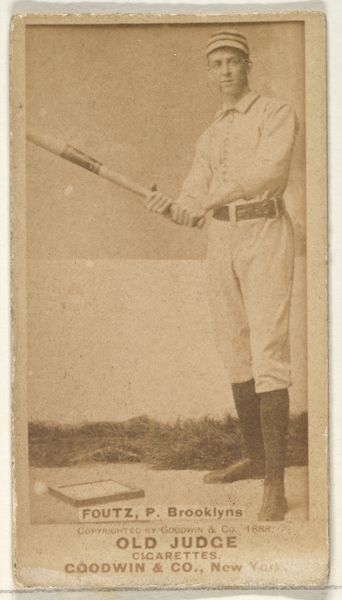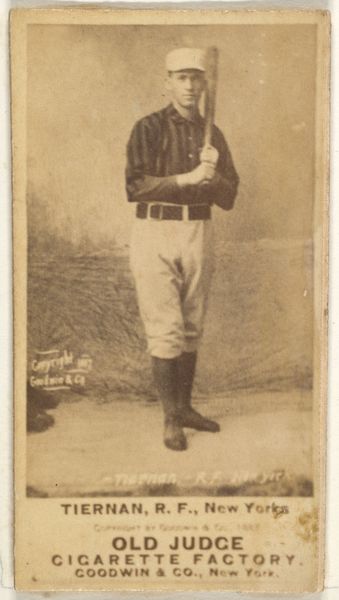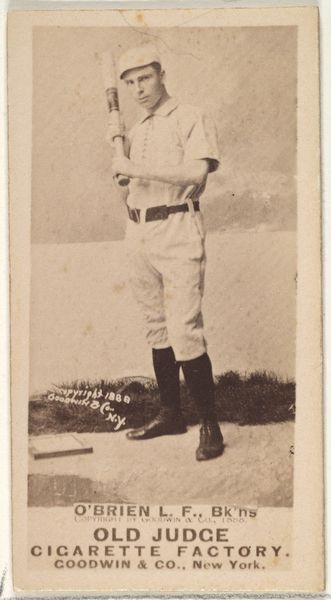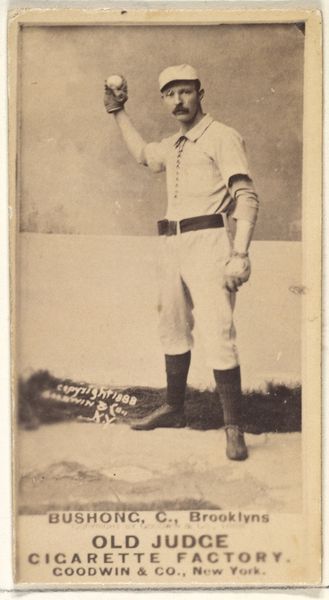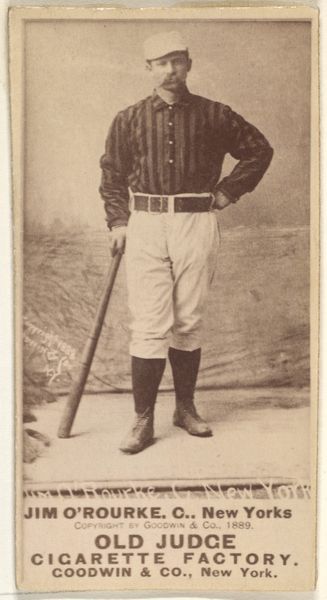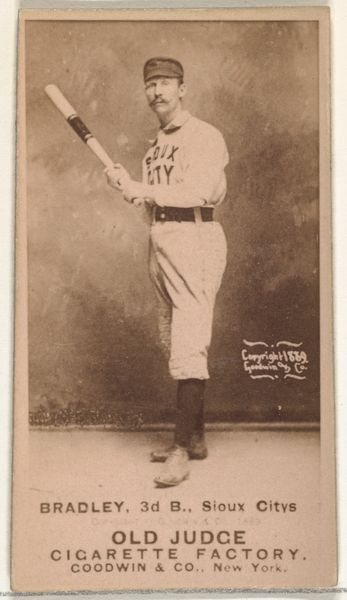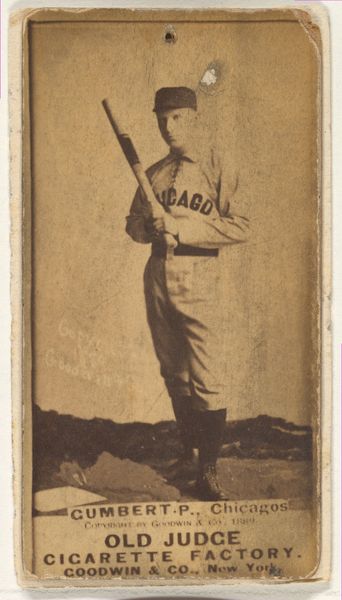
Walter Robert "Walt" Wilmot, Left Field, Washington Nationals, from the Old Judge series (N172) for Old Judge Cigarettes 1888
0:00
0:00
drawing, print, photography, albumen-print
#
portrait
#
drawing
#
16_19th-century
# print
#
baseball
#
photography
#
19th century
#
men
#
athlete
#
albumen-print
Dimensions: sheet: 2 11/16 x 1 3/8 in. (6.9 x 3.5 cm)
Copyright: Public Domain
Editor: Here we have an albumen print from 1888, a baseball card of Walter Robert "Walt" Wilmot, created by Goodwin & Company for Old Judge Cigarettes. There's a stark formality to the pose and the composition. What elements stand out to you most prominently? Curator: Primarily, I observe the composition. The subject's frontal pose, centered, creates an immediate visual anchor. The tonal range, limited as it is, contributes to a shallow depth of field, emphasizing the flatness of the picture plane. Note the placement of the bat; it creates a strong vertical line that is offset by the gentle slope of the backdrop, establishing a dialogue between line and form. Editor: That’s fascinating. The bat as a deliberate compositional element—I hadn't considered it that way. Do you see a visual relationship between Wilmot and the setting behind him? Curator: Precisely. Consider how the background lacks crisp detail, functioning almost as a wash of tone. This lack of distinct forms guides the viewer’s attention back to the detailed articulation of Wilmot's face and uniform, focusing our analysis on the figure itself. The initial "W" and the patterned belt draw the viewer’s eyes. Editor: The visual hierarchy, drawing attention to key elements… I’m starting to see how that enhances the impact. It's not just a snapshot, it's a very deliberate presentation. Curator: Exactly. Even the inscription at the bottom can be viewed as contributing to the overall structure; it frames the image and anchors it to the material reality of its production, a commercial product intended for mass distribution. Editor: I appreciate the insights into the structure and compositional intention. It enriches my perception greatly! Curator: It’s about dissecting the formal components, the lines, tones, shapes, and considering how they contribute to the artwork’s effect on us. I trust you find that as informative as I do.
Comments
No comments
Be the first to comment and join the conversation on the ultimate creative platform.
